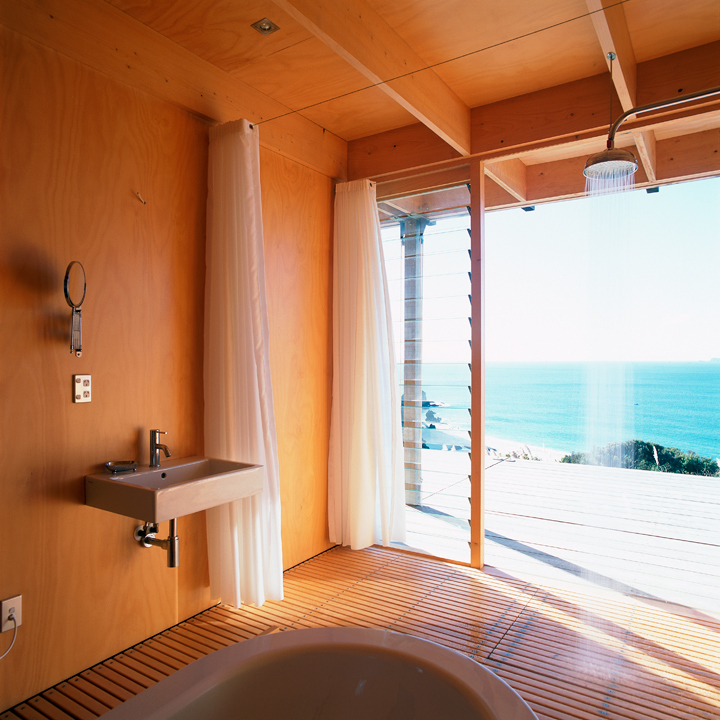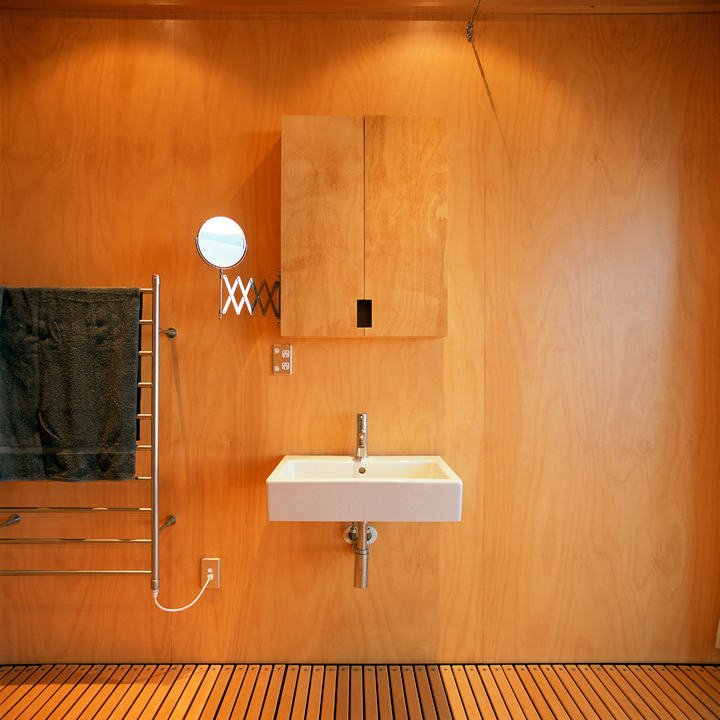Sustainable bathrooms
What’s a ‘sustainable bathroom”?
It’s one where the water comes from the roof which serves it, the water is reused to flush the toilet and wash clothes.
That’s easy enough; it happens every day at my place, Sydney’s Sustainable House, and has been for the last 16 years. Ho hum.
The tough part is this: what materials do you use for the walls, floors and ceilings? To be sustainable they need to be timber that’s grown in plantations, metals that are recycled. They must not be cement, ceramics or plastics which cause the pollution that’s driving our floods, droughts, habitat destruction, have huge transport and fuel costs.
The idea of not using tiles, grout and cement seems to shock folks that I talk to.
Enough already. Let beauty, style and passion do the talking here. Look at these photos – they show a couple of New Zealand projects which win the debate about materials; thank you over there.




thanks again michael.. appreciate your help and direction.. cheers!!
Ibika: yes – a useful overview of cement is here:
“CO2 emissions
Carbon concentration in cement spans from ?5% in cement structures to ?8% in the case of roads in cement.[29] Cement manufacturing releases CO2 in the atmosphere both directly when calcium carbonate is heated, producing lime and carbon dioxide,[30] and also indirectly through the use of energy if its production involves the emission of CO2. The cement industry produces about 5% of global man-made CO2 emissions, of which 50% is from the chemical process, and 40% from burning fuel.[31] The amount of CO2 emitted by the cement industry is nearly 900 kg of CO2 for every 1000 kg of cement produced. [32] The high proportion of carbon dioxide produced in the chemical reaction leads to large decrease in mass in the conversion from limestone to cement. So, to reduce the transport of heavier raw materials and to mimimize the associated costs, it is more economical for cement plants to be closer to the limestone quarries rather than to the consumer centers.[33]
In certain applications, lime mortar reabsorbs the same amount of CO2 as was released in its manufacture, and has a lower energy requirement in production than mainstream cement. Newly developed cement types from Novacem[34] and Eco-cement can absorb carbon dioxide from ambient air during hardening.[35] Use of the Kalina cycle during production can also increase energy efficiency.
[edit]“:
http://en.wikipedia.org/wiki/Cement#Environmental_impacts
mm is there any good websites or other references to direct people to if one wishes to try and show people data around why they shouldnt use ceramics, concrete, grout etc?..
cheers
Once the bathroom is constructed the sustainability comes in being able to keep it clean without chemicals. Materials that do not harbour moulds and a heating system that dries it quickly may be more sustainable over a lifetime than the actual building material. I have not used chemical cleaners in my bathroom for 20 months. It is wiped down immediately after showering with a microfibre cloth then towelled. Takes 2 minutes a day. Glass splash protector has eco surface protection and wipes sparkling clear every day. A large shower space for walking directly into and no door also means great air circulation, no nooks and crannies. Toilet is flushed from tank water. The walls are venetian plaster and the floors are painted with non toxic paint. There is no grout. A hydronically heated towel rail dries the wet towels. Hot western sun pours in so the room is very dry. If I had my choice over I would probably have hydronically heated the floor in there.
yes; it’s just one sheet I think that’s acting as a floor-wide drain, too
Hi MM, so the sub flooring is recycled steel??..